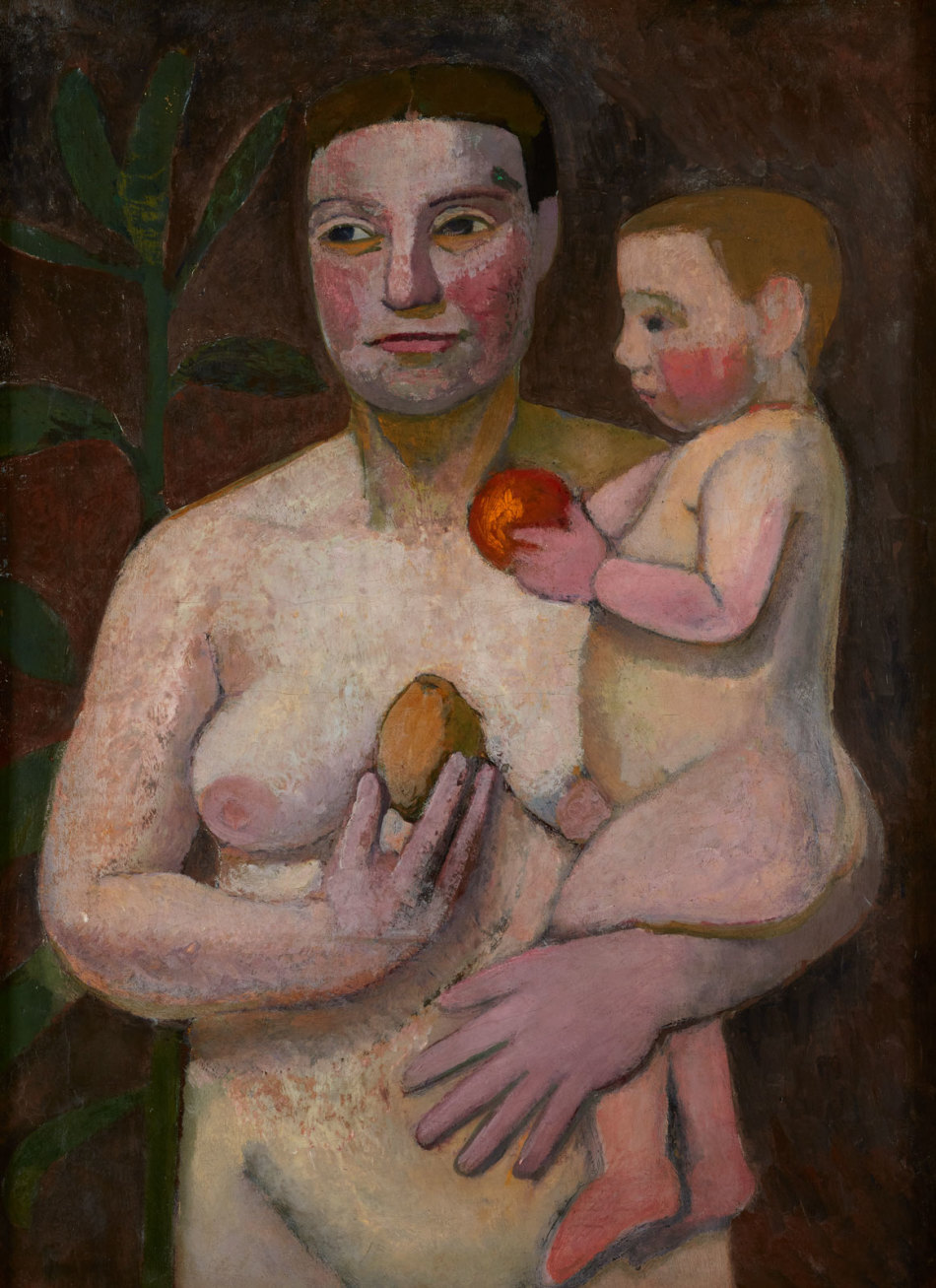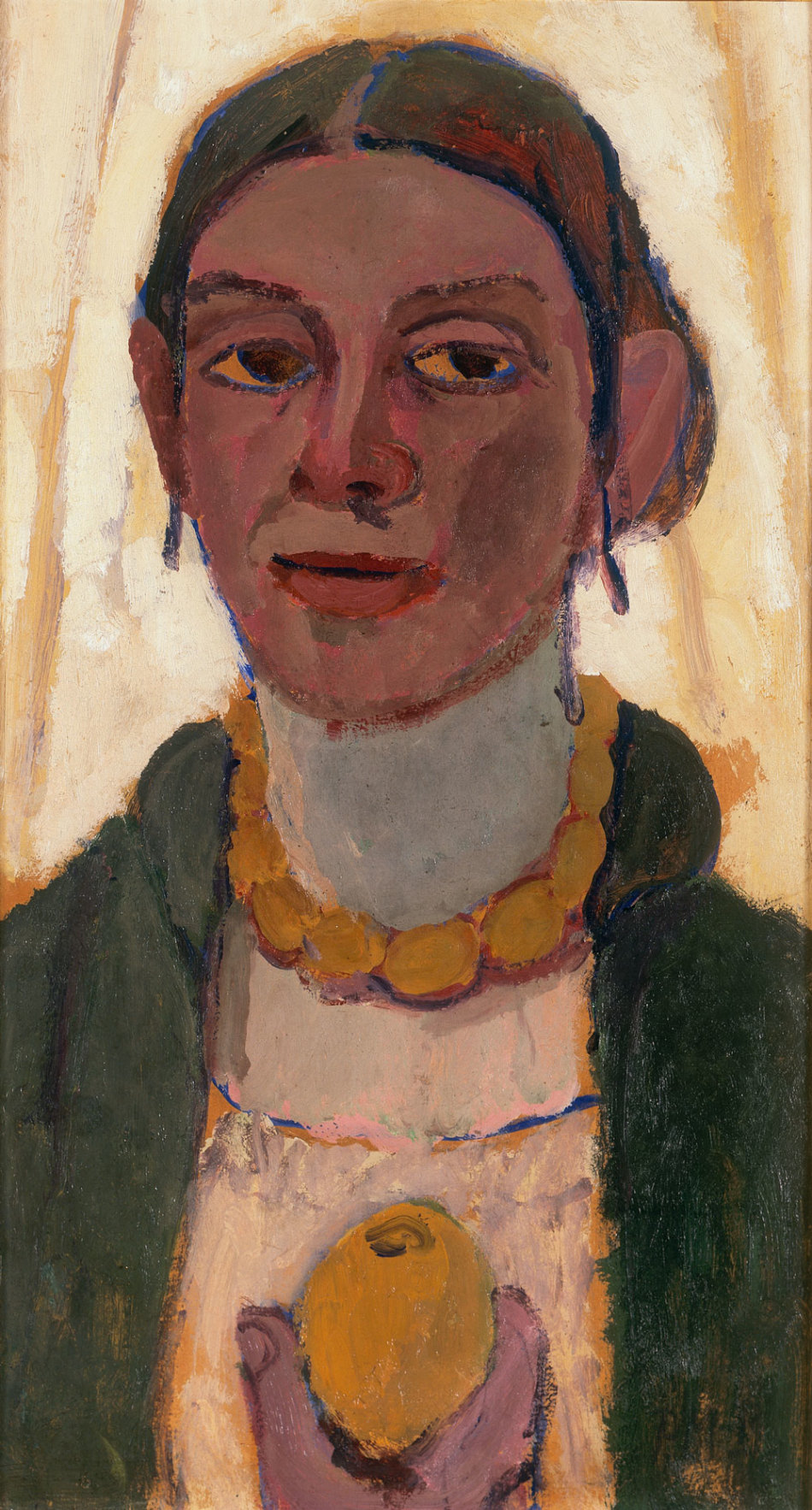Meet the artist: Paula Modersohn-Becker
Meet the artist: Paula Modersohn-Becker
By Francesca Wade
Published 10 October 2022
Torn between domestic life and the studio, the German painter portrayed women in a startling new light.
-
From the Autumn 2022 issue of RA Magazine, issued quarterly to Friends of the RA.
Francesca Wade is the author of Square Haunting: Five Women, Freedom and London Between the Wars (Faber). She is working on a book about Gertrude Stein.
Paula Modersohn-Becker’s Mother with Child on her Arm, Nude II (below), of autumn 1906, is an astonishingly frank portrayal of the post-partum body. The mother looks out with an expression which hints at both amusement and total exhaustion as her child plays with fruit – a symbol of fertility – in her arms. In another painting that year, Modersohn- Becker imagined herself as pregnant in Self-portrait on the Sixth Wedding Day, one of the most radical self-portraits ever made. But the artist was to die, aged just 31, only a year later, following complications relating to the birth of her first child: her extraordinary, unidealised portrayals of women and girls stand as testament to a life lived in commitment to her own artistic vision and moral principles often at odds with societal expectations.
It was in Worpswede, a small village 15 miles north of her family’s home in Bremen, where Paula Becker fell in love with colour, and its possibilities in painting. After studying art in London and Berlin, in 1898 she came to live and work alongside a colony of artists who had made their homes in this rural community – among them her future husband Otto Modersohn, and Ottilie Reylaender, whose work also appears in Making Modernism. Becker’s eye was immediately captured by the ever-shifting light, the verdant forests and reflective canals, and the people – both her fellow artists and the farmers and villagers she painted daily. “Painting people is really better than painting landscape,” she decided. Her Worpswede works often linger on women – walking in the woods, tending to children and animals – portrayed with a power borne of real empathy.
-

Paula Modersohn-Becker, Mother with Child on her Arm, Nude II, 1906.
Oil on canvas. 80 x 59 cm. Museum Ostwall im Dortmunder U. Photo: Jürgen Spiler, Dortmund.
-
The artist spent much of her life in Worpswede, with several extended stays in Paris, where she spent hours sketching in the Louvre – examining the Old Masters and ancient Greek and Egyptian art – and developing her technical range at art school. She encountered the work of Van Gogh, Cézanne and Gauguin, whose use of colour helped form her own distinctive palette, and was particularly struck by the work of Rodin, who she deemed the greatest living artist: wandering among his creations in his atelier (which had also enchanted Kollwitz), she felt that “the remarkable dreamlike figures that he hurls onto the paper are the most singular expression of his art”.
In her journal, Becker wrote that she wanted to express “the gentle vibration in things”: thinking of the shapes of ancient Greek head-sculptures and Fayum mummy portraits, on which she drew for some of her own self- portraits, she wrote that “a great simplicity of form is something marvellous”. Her backgrounds are often flattened, her subjects in close, direct focus; her works are imbued with a palpable intimacy that belies their careful composition (“personal feeling,” she wrote, “is the main thing”).
-

Paula Modersohn-Becker, Portrait of an Italian Girl, 1906.
Oil on board. 34 x 30.3 cm. Private collection, on long-term loan to The Courtauld Gallery, London. Photo: © The Courtauld.
-
Through her adult life, Modersohn-Becker struggled to reconcile her professional drive with her personal relationships, her artistic vision with the prevailing expectations of her as a woman and a wife. Disappointment in her marriage, and breakdowns in her intense relationships with the sculptor Clara Westhoff and Westhoff ’s husband, the poet Rainer Maria Rilke, led Modersohn-Becker to temporarily leave Worpswede, and Otto, for ‘a new life’ in Paris, in March 1906. It was there she made some of her most expressive works, harnessing her emotional turmoil to create forceful self-portraits and a series of remarkable paintings of women – pregnant, breastfeeding, ageing. “I’d like to render the ecstasy, the fullness, the excitement of colour, the power,” she wrote in 1907, the year of her death. This was an artist who painted life as she lived it: with risks and experiments, refusing to compromise her integrity to the end.
-

Paula Modersohn-Becker, Self-portrait with Lemon, 1906-7.
Oil tempera on cardboard. 50 x 27.5 cm. Paula-Modersohn-Becker-Stiftung, Bremen, on loan from a private collection.
-
Making Modernism: Paula Modherson-Becker, Käthe Kollowitz, Gabriele Münter and Marianne Werefkin The Gabrielle Jungels-Winkler Galleries, Royal Academy of Arts, 12 Nov-Feb 2023. Supported by BNP Paribas with additional support from the Huo Family Foundation, The Tavolozza Foundation, and the International Music and Art Foundation.
-
-

Enjoyed this article?
Become a Friend to receive RA Magazine
As well as free entry to all of our exhibitions, Friends of the RA enjoy one of Britain’s most respected art magazines, delivered directly to your door. Why not join the club?
-







